2012 Copyright Benchmark Holidays Private Limited | Powered by ITMART

3 Days Tour to Sri Lanka
Kandy
Kandy, or Maha Nuwara, meaning “Great City” in Sinhalese, is an ancient city in the heart of Sri Lanka, dating back to the mid 14th Century. It was established by King Wickramabahu, and in 1592 became the capital city of the last remaining kingdom on the island. The Portuguese shortened this to "Candea", using the name for both the kingdom and its capital Senkadagalapura.The 116km drive up North from Colombo to Kandy is punctuated with scenic spice gardens, lush tropical vegetation, and winding mountain roads. Past the Pinnawela Elephant Orphanage, the incredible Mahaweli River and famous Peradeniya Gardens lies Kandy. The city, which is located in the centre of the island, sits at an elevation of 500m (1,640ft) above sea level and covers a total area of 1,940 km2 (749 Mi2). With a population of 111,000 people, it is the second-largest city in the country.Kandy is locked with surrounding hills as barriers to expansion of the city. The view of the Dalada Maligawa from the Kandy Lake is magnificent. The heart of the city is a weave of pre-19th century as well as modern buildings that can be seen along the Dalada Vidiya, or winding walkway around the Kandy Lake.While the island itself is a tropical climate, Kandy’s high altitude and inland location lends itself to cooler temperatures. The city is humid and subject to the monsoon season, which happens from May through July and again in December and January Places to visit: Maligawa | Peradeniya botanical garden | Elephant Orphanage |
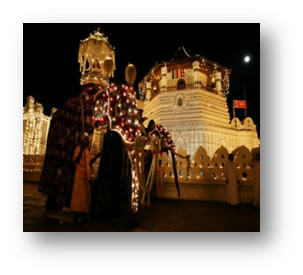 |
 |
 |
|
Nuwara Eliya
The city was founded by Samuel Baker, the discoverer of Lake Albert and the
explorer of the Nile in 1846. Nuwara Eliya's climate lent itself to
becoming the prime sanctuary of the British civil servants and planters in
Ceylon. Nuwara Eliya, called Little England then, was also a hill country
retreat where the British colonialists could immerse in their pastimes such
as fox hunting, deer hunting,elephant hunting, polo, golf and
cricket.Although the town was founded in the 19th century by the British,
the whole district is today visited by native travelers. Anyone who visits
the city can wallow in its nostalgia of bygone days by visiting these
landmark buildings. |
 |
 |
 |
4 Days Tour to Sri Lanka
Colombo
Colombo, Sri Lanka's bustling capital, is located on the country's
west coast and with a population of between 800,000 and one million
(estimates vary) is by far the country's biggest city, as well as its
window on the world. Its natural harbour at the mouth of the Kelani River
was a magnet for successive traders and conquerors.Dutch.The city is a
sometimes jarring mix of old and new,with a central cluster of high-rise
office blocks and hotels overshadowing red-tiled colonial-era buildings and
sprawling street markets which overflow with highpiled fruit and vegetables,
colourful silks and cottons, and deliciously fragrant spices. |
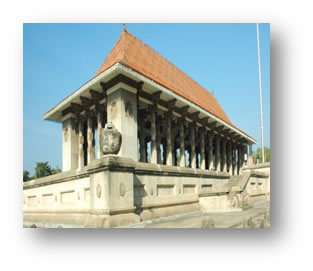 |
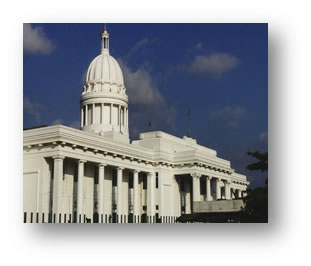 |
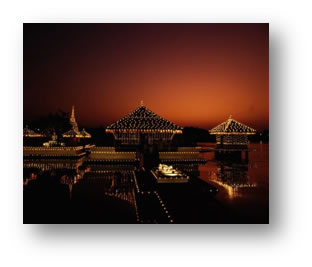 |
|
Kandy
Kandy, or Maha Nuwara, meaning “Great City” in Sinhalese, is an ancient city in the heart of Sri Lanka, dating back to the mid 14th Century. It was established by King Wickramabahu, and in 1592 became the capital city of the last remaining kingdom on the island. The Portuguese shortened this to "Candea", using the name for both the kingdom and its capital Senkadagalapura.The 116km drive up North from Colombo to Kandy is punctuated with scenic spice gardens, lush tropical vegetation, and winding mountain roads. Past the Pinnawela Elephant Orphanage, the incredible Mahaweli River and famous Peradeniya Gardens lies Kandy. The city, which is located in the centre of the island, sits at an elevation of 500m (1,640ft) above sea level and covers a total area of 1,940 km2 (749 Mi2). With a population of 111,000 people, it is the second-largest city in the country.Kandy is locked with surrounding hills as barriers to expansion of the city. The view of the Dalada Maligawa from the Kandy Lake is magnificent. The heart of the city is a weave of pre-19th century as well as modern buildings that can be seen along the Dalada Vidiya, or winding walkway around the Kandy Lake.While the island itself is a tropical climate, Kandy’s high altitude and inland location lends itself to cooler temperatures. The city is humid and subject to the monsoon season, which happens from May through July and again in December and January Places to visit: Maligawa | Peradeniya botanical garden | Elephant Orphanage |
 |
 |
 |
|
Nuwara Eliya
The city was founded by Samuel Baker, the discoverer of Lake Albert and the
explorer of the Nile in 1846. Nuwara Eliya's climate lent itself to
becoming the prime sanctuary of the British civil servants and planters in
Ceylon. Nuwara Eliya, called Little England then, was also a hill country
retreat where the British colonialists could immerse in their pastimes such
as fox hunting, deer hunting,elephant hunting, polo, golf and
cricket.Although the town was founded in the 19th century by the British,
the whole district is today visited by native travelers. Anyone who visits
the city can wallow in its nostalgia of bygone days by visiting these
landmark buildings. |
 |
 |
 |
5 Days Tour to Sri Lanka
Colombo
Colombo, Sri Lanka's bustling capital, is located on the country's
west coast and with a population of between 800,000 and one million
(estimates vary) is by far the country's biggest city, as well as its
window on the world. Its natural harbour at the mouth of the Kelani River
was a magnet for successive traders and conquerors.Dutch.The city is a
sometimes jarring mix of old and new,with a central cluster of high-rise
office blocks and hotels overshadowing red-tiled colonial-era buildings and
sprawling street markets which overflow with highpiled fruit and vegetables,
colourful silks and cottons, and deliciously fragrant spices. |
 |
 |
 |
|
Kandy
Kandy, or Maha Nuwara, meaning “Great City” in Sinhalese, is an ancient city in the heart of Sri Lanka, dating back to the mid 14th Century. It was established by King Wickramabahu, and in 1592 became the capital city of the last remaining kingdom on the island. The Portuguese shortened this to "Candea", using the name for both the kingdom and its capital Senkadagalapura.The 116km drive up North from Colombo to Kandy is punctuated with scenic spice gardens, lush tropical vegetation, and winding mountain roads. Past the Pinnawela Elephant Orphanage, the incredible Mahaweli River and famous Peradeniya Gardens lies Kandy. The city, which is located in the centre of the island, sits at an elevation of 500m (1,640ft) above sea level and covers a total area of 1,940 km2 (749 Mi2). With a population of 111,000 people, it is the second-largest city in the country.Kandy is locked with surrounding hills as barriers to expansion of the city. The view of the Dalada Maligawa from the Kandy Lake is magnificent. The heart of the city is a weave of pre-19th century as well as modern buildings that can be seen along the Dalada Vidiya, or winding walkway around the Kandy Lake.While the island itself is a tropical climate, Kandy’s high altitude and inland location lends itself to cooler temperatures. The city is humid and subject to the monsoon season, which happens from May through July and again in December and January Places to visit: Maligawa | Peradeniya botanical garden | Elephant Orphanage |
 |
 |
 |
|
Nuwara Eliya
The city was founded by Samuel Baker, the discoverer of Lake Albert and the
explorer of the Nile in 1846. Nuwara Eliya's climate lent itself to
becoming the prime sanctuary of the British civil servants and planters in
Ceylon. Nuwara Eliya, called Little England then, was also a hill country
retreat where the British colonialists could immerse in their pastimes such
as fox hunting, deer hunting,elephant hunting, polo, golf and
cricket.Although the town was founded in the 19th century by the British,
the whole district is today visited by native travelers. Anyone who visits
the city can wallow in its nostalgia of bygone days by visiting these
landmark buildings. |
 |
 |
 |
|
Galle
The seaside town of Galle is 116 Km., from Colombo by road or rail, down the
southwest coast. Both routes are picturesque, following the coastline
closely for much of the way.Today’s town has grown greatly and spreads
into the hinterland but the Fort is the slow-beating heart of Galle’s
history.The walled city has stood since the early sixteenth century, through
the Colonial periods of the Portuguese, Dutch and British and in our present
times is proclaimed as an Archaeological Reserve and been identified as a
World Heritage site. Drive back through Dodanduwa, visiting, if permission
can be arranged, the Buddhist island hermitage in the Ratgama Lake, a
retreat of infinite peace and beauty.Unawatuna bay provides safe swimming
and snorkeling, protected as it is by a reef. Places to visit: Galle fort | Unawatuna |
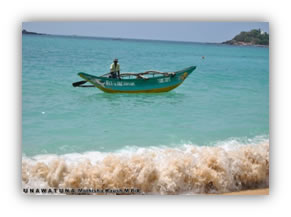 |
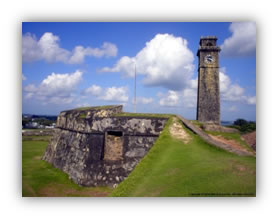 |
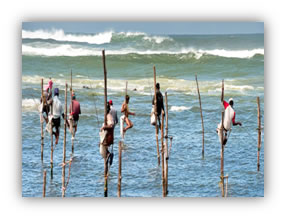 |
6 Days Tour to Sri Lanka
Colombo
Colombo, Sri Lanka's bustling capital, is located on the country's
west coast and with a population of between 800,000 and one million
(estimates vary) is by far the country's biggest city, as well as its
window on the world. Its natural harbour at the mouth of the Kelani River
was a magnet for successive traders and conquerors.Dutch.The city is a
sometimes jarring mix of old and new,with a central cluster of high-rise
office blocks and hotels overshadowing red-tiled colonial-era buildings and
sprawling street markets which overflow with highpiled fruit and vegetables,
colourful silks and cottons, and deliciously fragrant spices. |
 |
 |
 |
|
Kandy
Kandy, or Maha Nuwara, meaning “Great City” in Sinhalese, is an ancient city in the heart of Sri Lanka, dating back to the mid 14th Century. It was established by King Wickramabahu, and in 1592 became the capital city of the last remaining kingdom on the island. The Portuguese shortened this to "Candea", using the name for both the kingdom and its capital Senkadagalapura.The 116km drive up North from Colombo to Kandy is punctuated with scenic spice gardens, lush tropical vegetation, and winding mountain roads. Past the Pinnawela Elephant Orphanage, the incredible Mahaweli River and famous Peradeniya Gardens lies Kandy. The city, which is located in the centre of the island, sits at an elevation of 500m (1,640ft) above sea level and covers a total area of 1,940 km2 (749 Mi2). With a population of 111,000 people, it is the second-largest city in the country.Kandy is locked with surrounding hills as barriers to expansion of the city. The view of the Dalada Maligawa from the Kandy Lake is magnificent. The heart of the city is a weave of pre-19th century as well as modern buildings that can be seen along the Dalada Vidiya, or winding walkway around the Kandy Lake.While the island itself is a tropical climate, Kandy’s high altitude and inland location lends itself to cooler temperatures. The city is humid and subject to the monsoon season, which happens from May through July and again in December and January Places to visit: Maligawa | Peradeniya botanical garden | Elephant Orphanage |
 |
 |
 |
|
Nuwara Eliya
The city was founded by Samuel Baker, the discoverer of Lake Albert and the
explorer of the Nile in 1846. Nuwara Eliya's climate lent itself to
becoming the prime sanctuary of the British civil servants and planters in
Ceylon. Nuwara Eliya, called Little England then, was also a hill country
retreat where the British colonialists could immerse in their pastimes such
as fox hunting, deer hunting,elephant hunting, polo, golf and
cricket.Although the town was founded in the 19th century by the British,
the whole district is today visited by native travelers. Anyone who visits
the city can wallow in its nostalgia of bygone days by visiting these
landmark buildings. |
 |
 |
 |
|
Galle
The seaside town of Galle is 116 Km., from Colombo by road or rail, down the
southwest coast. Both routes are picturesque, following the coastline
closely for much of the way.Today’s town has grown greatly and spreads
into the hinterland but the Fort is the slow-beating heart of Galle’s
history.The walled city has stood since the early sixteenth century, through
the Colonial periods of the Portuguese, Dutch and British and in our present
times is proclaimed as an Archaeological Reserve and been identified as a
World Heritage site. Drive back through Dodanduwa, visiting, if permission
can be arranged, the Buddhist island hermitage in the Ratgama Lake, a
retreat of infinite peace and beauty.Unawatuna bay provides safe swimming
and snorkeling, protected as it is by a reef. Places to visit: Galle fort | Unawatuna |
 |
 |
 |
|
Sigiriya
Sri Lankan architectural tradition is well displayed at Sigiriya, the best
preserved city centre in Asia from the first millennium, with its
combination of buildings and gardens with their trees, pathways, water
gardens, the fusion of symmetrical and asymmetrical elements, use of varying
levels and of axial and radial planning.The Complex consists of the central
rock, rising 200 meters above the surrounding plain, and the two rectangular
precincts on the east (90 hectares) and the west (40 hectares), surrounded
by two moats and three ramparts.The plan of the city is based on a precise
square module. Places to visit: Lion's Rock | Cave Temples |
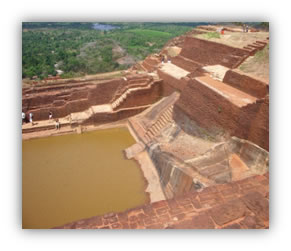 |
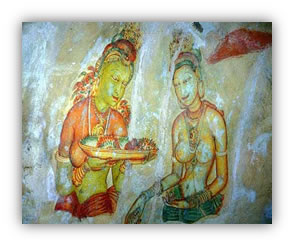 |
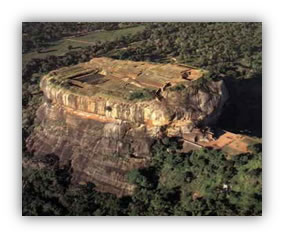 |

|
Yalaa
Though Sri Lanka is very small in land area, the great diversity in habitats
harbors are a rich and diverse fauna and flora, with many species endemic to
the island. Historically as well as in the modern era, successive rulers and
governments of Sri Lanka have strived to provide sanctuary and protection to
our beautiful wildlife. Today the demands and aspirations of an expanding
human population makes it difficult for the government to be solely
responsible for the protection, preservation and management of this beguiled
wild heritage of ours. Today, especially where human interest and wildlife
interest are in direct conflict. It is imperative that private organizations
with resources step into and fill the areas that need immediate attention:
environmental education, long term research, and to develop integrated
projects for community based conservation. Places to visit |
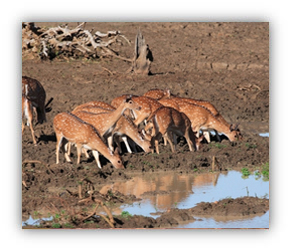 |
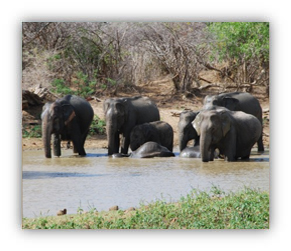 |
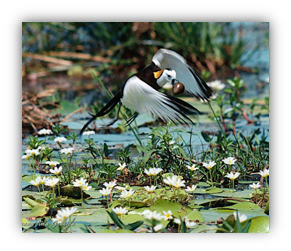 |




